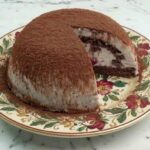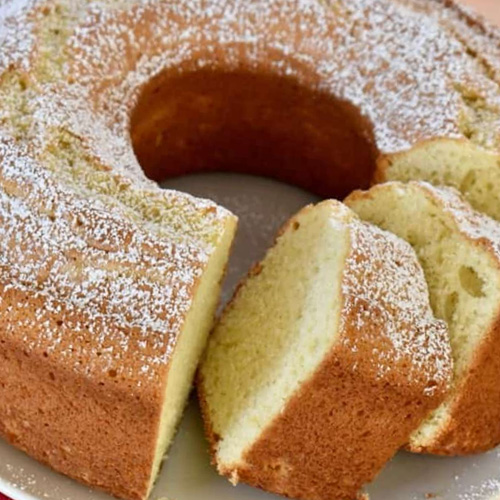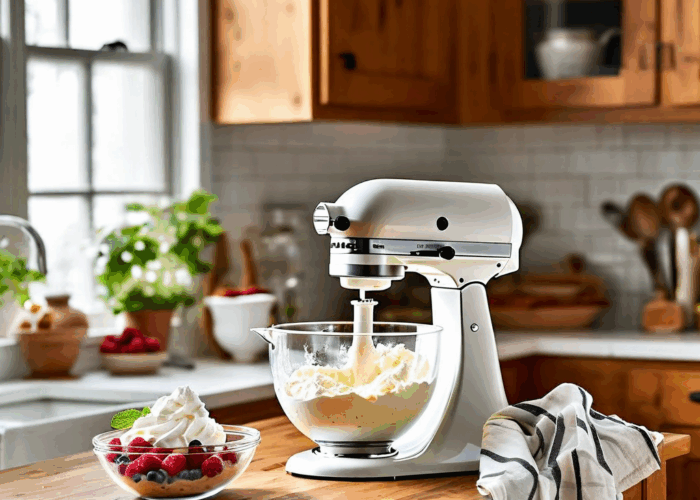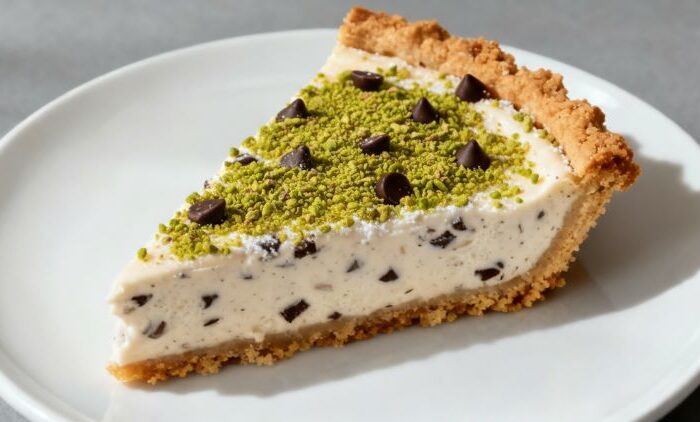Cornetto: Italy’s Flaky, Creamy Morning Delight
A Cornetto is a beloved Italian pastry, shaped like a croissant but unique in taste and texture. Unlike the French croissant, it’s sweeter and richer, often made with eggs, butter, and extra sugar. Cornetti can be enjoyed plain, lightly dusted with powdered sugar, or filled with a variety of sweet treats such as cream, jam, or chocolate.
But what really makes the Cornetto shine is its amazing mix of textures and flavors. The outer layer? Crisp and buttery. The inside? Soft and airy. You take a bite, and that creamy filling just melts in your mouth. Seriously, it leaves this sweet aftertaste that makes you want to go back for another one. Sometimes it’s even topped with powdered sugar or slivered almonds, turning each Cornetto into a tiny work of art!
And let’s not forget—there’s more to the Cornetto than just taste. It’s like a symbol of Italian tradition. Cafés all over Italy have their own spins on it—some are stuffed with classic pastry cream, while others might drizzle chocolate on top. And then there are those seasonal versions with fruity or nutty fillings. It’s such a versatile treat, and boy, is it delicious!
Whether you’re wandering through the streets of Rome, checking out Milan, or just enjoying a quiet morning at home, a Cornetto is more than just a pastry, it’s a little taste of Italian joy.
Cornetto vs. Croissant: Key Differences
A Cornetto is softer, sweeter, and richer, while a croissant is flakier, buttery, and lighter. Both are delicious, but they offer different experiences for your taste buds.
Texture: Cornetti are soft and slightly chewy; croissants are flaky and layered.
Sweetness: Cornetti are sweeter, often with sugar in the dough or fillings. Croissants are usually plain or lightly sweetened.
Filling: Cornetti commonly have custard, chocolate, jam, or hazelnut; croissants are plain or filled with chocolate or almond paste.
Dough: Cornetti dough includes eggs for richness; croissant dough relies on laminated butter layers for flakiness.
Tradition: Cornetti are an Italian breakfast staple, while croissants are classic French pastries.
Cornetto vs. Cornetti: What’s the Difference?
The distinction is simple: Cornetto is singular, referring to one pastry, while Cornetti is plural, meaning two or more. So, if you’re enjoying a single flaky, buttery Italian pastry with custard or chocolate, you’re eating a Cornetto. If you grab several for breakfast or brunch, you’re serving Cornetti.
Cornetto Flavors
Custard: Classic, creamy, and rich.
Chocolate/Nutella: Sweet and indulgent.
Fruit Jam: Strawberry, apricot, or raspberry for a tangy twist.
Almond Cream: Nutty and smooth.
Ricotta & Honey: Lightly sweet and silky.
Top with powdered sugar, slivered almonds, or a chocolate drizzle for extra flair.

Serving
Cornetti are best enjoyed fresh, slightly warm, and straight from the oven. Serve them:
For Breakfast: Pair with a cappuccino, espresso, or hot chocolate for an authentic Italian morning.
For Brunch: Arrange on a platter with fresh fruit, yogurt, or a selection of jams for a light, elegant spread.
As a Snack or Dessert: Enjoy with a drizzle of chocolate, a dusting of powdered sugar, or a side of fresh berries.
Sharing: Cornetti are perfect for gatherings, serve a variety of fillings so everyone can find their favorite.
Tip: For a café-style experience, warm Cornetti for a few minutes before serving to bring out their buttery aroma and soft, fluffy interior.
Storage
Cornetti are best enjoyed fresh, but if you need to store them, here’s how to keep them tasty:
Room Temperature: Store in an airtight container for up to 1–2 days. This keeps the pastry soft and the filling fresh.
Refrigeration: If your Cornetti are filled with cream or custard, store in the fridge for up to 2 days. Bring them to room temperature or warm slightly before serving.
Freezing: Cornetti freeze well. Wrap each pastry individually in plastic wrap and place in a freezer-safe bag for up to 1 month. Reheat in the oven at 160°C (320°F) for 5–10 minutes for a fresh-baked taste.
Tip: Avoid leaving Cornetti exposed to air; it can dry out the delicate layers. A quick reheat brings back the soft, buttery texture and enhances the aroma.













